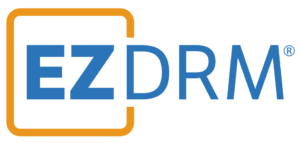Ateliere – Using custom scripts for media workflows? you need to think again
Dan Goman, CEO, Ateliere Creative Technologies
The media industry has undergone a tectonic shift in its operations, driven by the rapid evolution of digital technology and an increasing slew of viewing platforms. To address the evolving need to serve more audiences across more devices, media companies have increasingly relied on custom scripts to shoehorn highly complex packaging and distribution requirements into platforms that weren’t originally designed for such purposes.
There is a smarter, more efficient approach to ensuring your media operations pivot quickly with your audiences’ demands: no-code/low code media supply chain platforms. These offer a compelling alternative to traditional custom scripting, delivering improved productivity, agility, and scalability in content management and distribution.
The era of custom scripts: a look back
Custom scripts became prevalent in media workflows during the early 1990s when the industry started digitizing its operations. With the proliferation of the internet and the consequent need for automated content management, the use of scripts gained momentum. Throughout the 2000s, custom scripts played a vital role in automating workflows, enabling efficient and precise control over media assets. However, maintaining and updating these custom scripts posed significant challenges because of their complexity and the technical expertise required.
The industry adoption of cloud computing and Software-as-a-Service (SaaS) solutions in the late 2010s marked a turning point, as the industry began shifting away from intricate custom scripts towards more accessible, no-code/low-code platforms.
Still, custom scripts have historically played an important role in addressing business issues, such as:
- Automating repetitive tasks in media workflows, like content ingest, transcoding, quality control, and distribution, significantly reducing human errors and improving operational efficiency.
- Custom scripts have been deployed to integrate disparate media systems and applications, providing a seamless flow of data across different stages of the media supply chain while improving overall coordination and productivity.
- Scripts have been used to handle complex media metadata, simplifying the process of content indexing, searching, and retrieval. This made it easier to manage and track vast volumes of media assets.
- They made it possible to implement advanced features specific to a company’s needs, such as custom algorithms for media processing or analysis, giving them a competitive edge.
- Custom scripts facilitated regulatory compliance by automating the generation and management of required reports and documentation, ensuring adherence to industry-specific laws and standards.
Whereas custom scripts answered multiple business requirements in the past, they often came with a range of issues that outweighed the outcomes in the long term.

The business risks of custom scripts
If you have deployed custom scripts any time in your business trajectory, you’ll be too aware of the hazards they present once deployed.
- Potential for errors: as custom scripts are developed and maintained by humans, there is a risk of introducing errors or bugs that may cause system failures or data loss.
- Maintenance costs: custom scripts require ongoing maintenance to keep up with changes in technology, upgrades, media formats, cybersecurity and business needs. This is extremely costly and time-consuming, often requiring endless hours of expensive professional services from your technology vendors.
- Lack of scalability: as media workflows become increasingly complex and data volumes grow, custom scripts struggle to keep up with demands, leading to delays and inefficiencies.
- Long deployment times: custom scripts take time to develop and test, delaying the implementation of new workflows or features that may be critical for business success.
- Difficult to document: because of their constantly changing nature, custom scripts are inherently terribly documented by habit or lack of process. In almost every instance and every company, scripts don’t have documentation making it problematic to handover and sustain through staff changes.
- Dependency on productized professional services: building and maintaining custom scripts requires specialized knowledge and skill, making it difficult to shift responsibilities among team members or hire new personnel. This is why many companies that use custom scripts have to rely on productized professional services to manage them.
The dawn of no-code/low-code platform solutions
No-code/low-code platform solutions bring a modern approach to addressing the complexity of modern media workflows. They provide a user-friendly, templated method for media operators, managers, and QC teams to easily configure and customize their media supply chain, eliminating the lengthy design, coding, testing, and implementation processes of custom-coded solutions.
These modern solutions come with pre-built modules and templates that can be quickly configured to fit a company’s needs, resulting in faster deployment times. Modules are maintained and updated by the platform provider as part of its regular update cycles, eliminating the need for users to run ongoing maintenance, thus reducing overall costs.
No-code/low-code platforms are highly scalable, as they’re designed to handle large volumes of data and complex workflows, making them a more suitable option as media operations grow. They typically provide a user-friendly interface that can be accessed by users with the necessary permissions, streamlining collaboration among team members.
Finally, low-code/no-code platforms reduce your business’ dependency on productized professional services, as they require minimal coding knowledge. This makes it easier to onboard new team members or shift responsibilities among existing ones.
Overall, low-code/no-code solutions are an efficient, reliable, and scalable alternative to managing your media business with custom scripts.
Migration to no-code/low-code platforms: a business imperative
For businesses in the media industry, migrating to no-code/low-code platforms is increasingly becoming a necessity. With the constant pressure to reduce time-to-market and prove immediate return-on-investment (ROI), media companies can eliminate lengthy development cycles and pivot quickly as the business needs thanks to no-code/low-code platforms. Their benefits include:
- Reduced Total Cost of Ownership (TCO): they provide pre-built package templates and turnkey functionality, designed to adapt to emerging technologies and quickly onboard new delivery partners.
- Simplified maintenance and operation: package templates are componentized, allowing for easy modification and adjustment of delivery profiles, reducing reliance on professional services and the associated maintenance costs.
- Ease of use: the no-code/low-code approach empowers users to select preset configurations and build business logic without programming or scripting knowledge, enabling quick response to changing demands and maintaining competitiveness.
- Operational efficiency: with faster deployment times, lower maintenance costs, and increased scalability, no-code/low code platforms can help media companies achieve higher levels of operational efficiency.
Time to flip the script
The shift from custom scripts to no-code/low-code platform solutions is a testament to the evolution of technology and the changing needs of the media industry. With the rapid pace of digital transformation and the increasing complexity of media workflows, embracing modern no-code/low-code platforms can be the differentiator to boost your business into new opportunities.
These platforms deliver expedited ROI, reduced TCO, simplified maintenance, and enhanced operational efficiency.
The future of media workflow management lies in the continued rise of no-code/low-code platforms and how they’re shaping the media industry today. It’s time for your media organization to take advantage of the simplicity and efficiency of these solutions.









